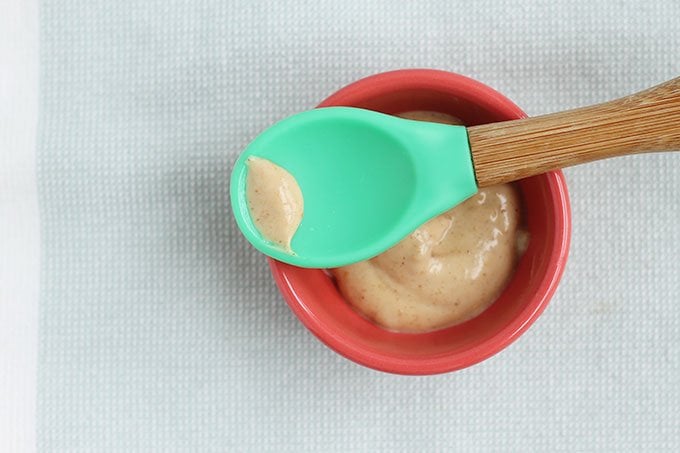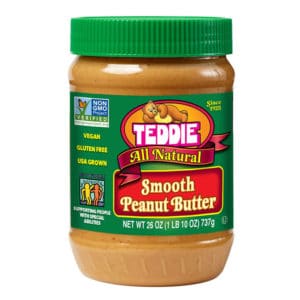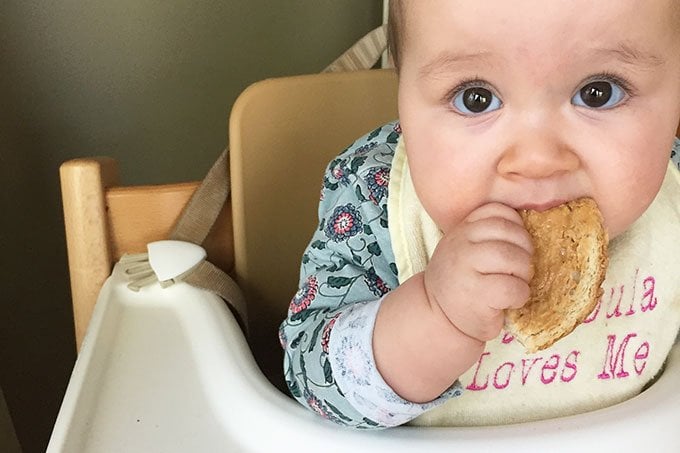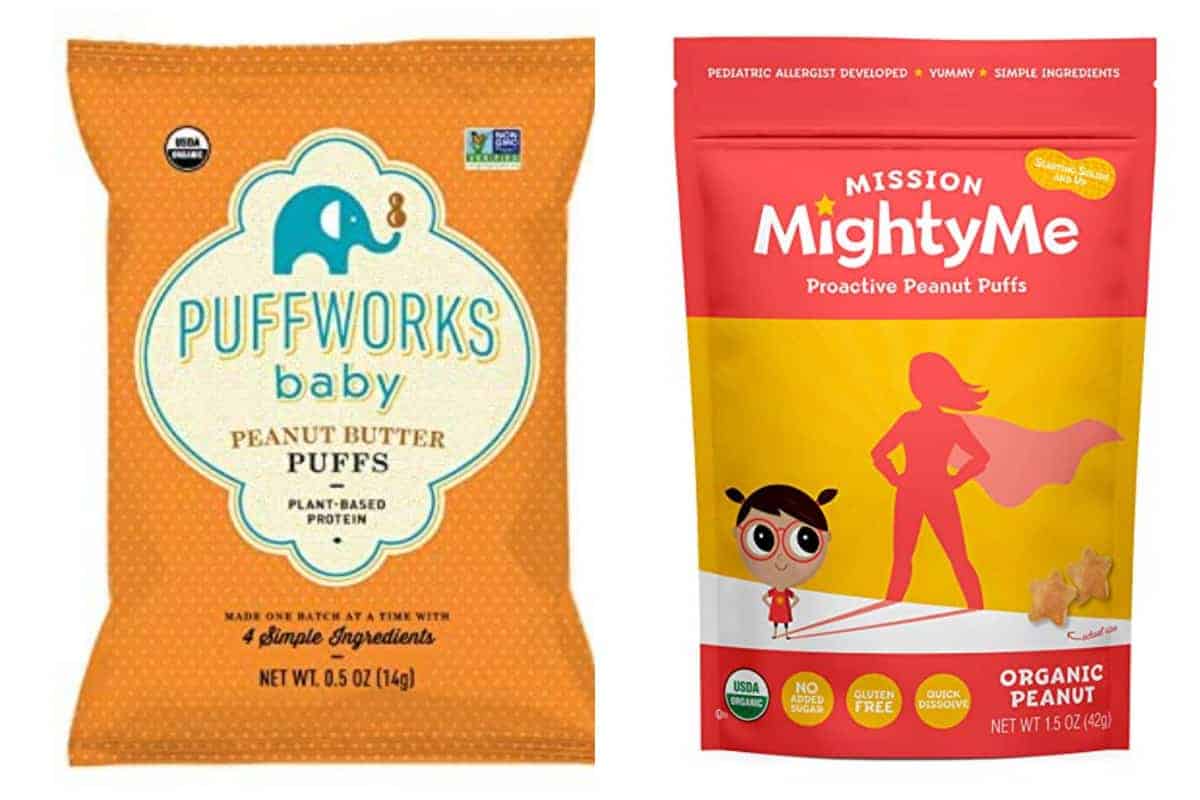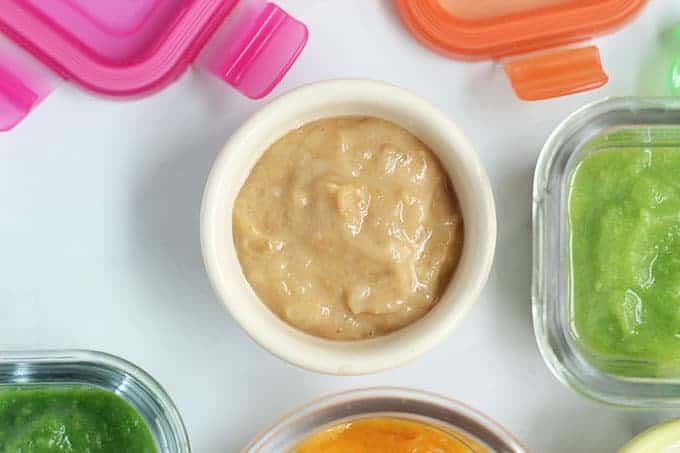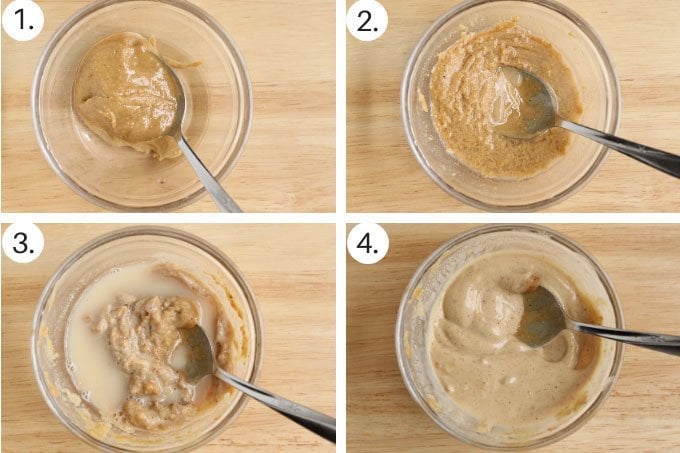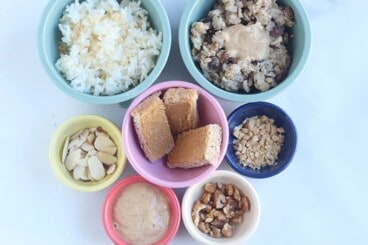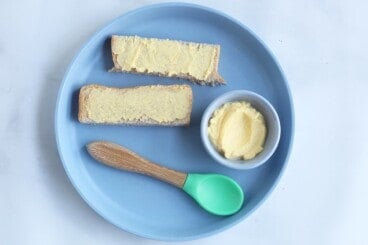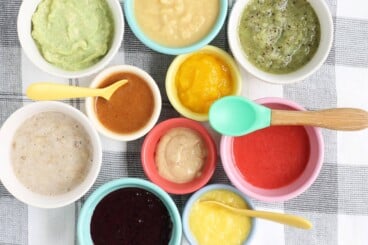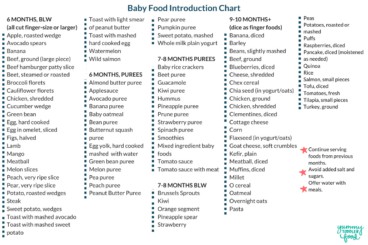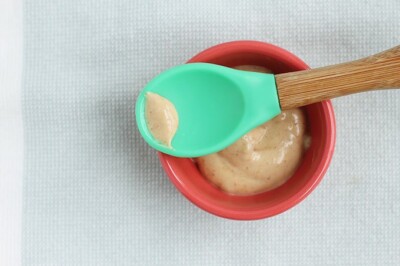The American Academy of Pediatrics recommends that potentially allergenic foods be introduced early on when starting solids at 6 months. This advice has changed recently, and family members may not realize that it’s no longer advised to wait until a child turns 1. In fact, waiting can actually increase the likelihood of an allergic reaction, so it’s important to introduce peanut butter baby food early and often to lower the risk. (You may also like Baby Pancakes, Sweet Potato Baby Food, Carrot Baby Food, and when can baby have eggs.)
How to Introduce Peanut Butter to a Baby Step-by Step
According to the National Institute of Allergy and Infectious Diseases, start by considering which group your child falls into: TIP: Talk to your pediatrician about any concerns you have, at any time. If you are at all worried, you can always introduce a peanut product in their office with their supervision to alleviate your stress. Just talk to them about your plan ahead of time.
What to Know About Peanut Allergy Symptoms
Typically, they appear soon after introducing the food. Symptoms of a peanut allergy may include anaphylaxis (which is the most severe), but also vomiting, indigestion, diarrhea, wheezing, repetitive coughing, tightness in the throat, hives, swelling in the mouth, and more. Diagnosing any food allergy can be complicated, so your best bet is to see a pediatric allergist. TIP: The good news is that research has shown up to 20 percent of individuals with a peanut allergy eventually outgrow it.
Best Peanut Butter for Babies
Look for a peanut butter without added sugar and opt for creamy to ensure that the texture is smooth for baby. I like Smucker’s Natural Peanut Butter, Whole Foods 365 Store Brand, and Teddie. There are many other options available, so just check the ingredients and look for one without added cane sugar or honey.
How to Avoid Choking With Peanut Products
The simplest way to avoid choking is to never offer actual whole peanuts. You should also avoid chunky peanut butter, which will be difficult (and potentially dangerous) for a baby. Also avoid spoonfuls of straight peanut butter which can get stuck in their mouths. See below for safe peanut options for baby.
How to Introduce Peanut Butter to Baby
I have three favorite ways that I will outline below. They include:
Peanut Butter Toast Peanut Butter Puffs Peanut Butter Puree
TIP: I recently saw a tip about grinding nuts into a powder to mix into other foods like oatmeal, which is another great option. The first time you offer peanut butter, it makes sense to limit the other foods in the same meal so you can easily isolate the cause if there’s a reaction.
Peanut Butter Toast for Baby
A simple way to offer peanut butter to baby is to spread a very thin layer onto a piece of lightly toasted bread. This is a classic baby led weaning food approach where you cut the toast into a piece that’s at least as big as your finger so it’s way too big for the baby to put the entire thing into their mouth. This is easy for a baby, even one as young as 6 months, to pick up and suck on. (This also works really well with mashed hard cooked egg yolk!) TIP: Do be sure to lightly toast the bread to reduce the chances that a piece of soft bread will get stuck onto the roof of their mouth.
Peanut Butter Puffs
Peanut Puffs from Mission Mighty Me are a nice option once babies develop their pincer grasp around 9 months. TIP: The great thing about these puffs is that they dissolve easily in baby’s mouth, are easy to hold, and are a healthy snack food you can continue serving through toddlerhood.
Peanut Butter Puree for Baby
My very favorite way to introduce peanut butter for the first time is to make it into a fluffy puree. It’s so easy, it’s good, and it’s very nutritious with health fats and protein. It’s a perfect no-cook baby food to make at home. To make this puree, you just need natural creamy peanut butter and water. The water helps to fluff up the peanut butter, making it into a yogurt-like consistency. It’s smooth and flavorful and can be stored for later, too.
How to Make Peanut Butter Puree Step-by-Step
Here’s a look at how to make a simple peanut butter baby food. TIP: Room temperature peanut butter and/or warmish water make this come together a little more easily than cold peanut butter.
Best Tips for Peanut Butter and Baby
Store any peanut butter puree leftovers in an airtight container in the fridge for up to 5 days. Keep stirring if the mixture looks separated. It may take a full minute or more of stirring until the mixture comes together. If it seems thick or sticky, thin it out with additional water. Choose creamy natural peanut butter without added sugar. Offer a small amount on a spoon, on its own, or mixed with a vegetable puree or fruit puree, or spread a thin layer onto a 1-2 finger-size piece of toast. Stop feeding baby when they turn their head away and close their mouth. (The serving size below is just a ballpark guess.) Consider a peanut puff like the ones from Puffworks Baby. Avoid large clumps or spoonfuls of peanut butter as that can be a choking hazard. Incorporate peanut butter, in consultation with your pediatrician, with other solid foods and formula or breast milk after baby has started solids, or around 6 months of age. If baby has or had eczema or other food allergies, check with your pediatrician for guidance on introducing food allergens.
I’d love to hear your feedback on this, so please comment below to share!
How to Serve Nuts to Babies and Toddlers
When can baby eat eggs?
10 Easy Homemade Baby Food Ideas
Baby Food Chart: BLW, Purees, Finger Foods
This post was first published August 2020.
